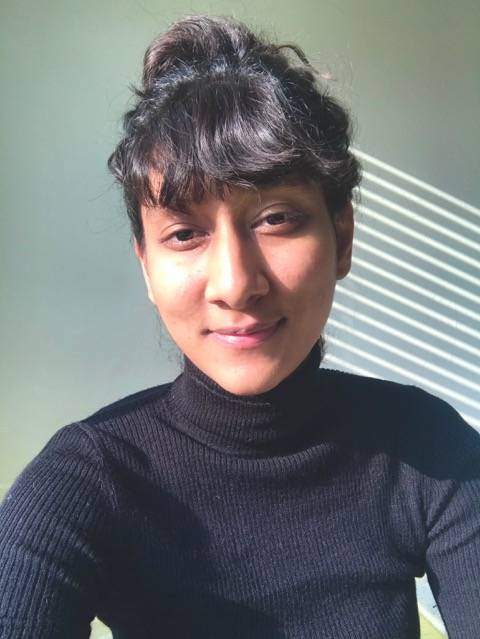To be a true artist requires something beyond the mastery of a skill, it demands creative vision. Among the titles of animator, motion designer, and even filmmaker which are most oft used to label Ankita Panda, artist is by far the most appropriate. The fact that she confesses she typically begins creating her films without a clear narrative to impart but rather as a way to explore an idea; this fearlessness is a quality found in creative professionals destined to influence.
Ankita’s films are praised for their originality by critics, peers, and the public. Fans of her productions don’t watch her films to be placated but instead to be prodded to consider the world around them and their place in it. Though you won’t find any flesh & blood people in her films, they are deeply rooted in the human experience.
Regarding her preference for animation to deliver her thoughts, Ms. Panda relates, “When it comes to my individual work, I always look at animation as the primary medium to communicate in. I would always prefer animation over live action as it gives me complete control over the story, characters, actions, and settings. Allso, I can swing from being completely literal to super abstract and still communicate the objective of the film effectively. I see animation as a medium to communicate the objective of a film, narrative or abstract, in the most unique and effective way possible.”

Clearly displaying Ankita’s affinity for combining the abstract with the commonplace is seen in her film Nine. Inspired by author Douglas Hofstadter’s The Mind’s I: Fantasies and Reflections On Self & Soul, Nine is a series of 9 impossible loops, played in sequence. Each loop presents a stick figure character interacting with an impossible object, further intensifying the effects of the already existing illusion. This pairing delivers a clear psychological and emotional touchstone for those of us who feel that the world can often be a place that doesn’t make sense while we maintain a seemingly “ordinary” existence.
The impossible objects seen in Nine were created with a 3D program and then altered with a traditional 2D animation applied by Ms. Panda to infuse a more organic aesthetic. This process requires an equal amount of faith and technique as Ankita informs, “The style is created through a process of exploration rather than planning, so it is impossible to know how the frames would all look together until they are completed and shot under the camera.”
Utilizing a completely different style with the film Slurp, Ankita made a strong social statement in black & white. Slurp resonated loudly with a global audience. The film was selected and screened at such events as Musicalmuto (Italy), the Paris International Animation Festival, Animation Nights, New York, Animest International Animation Festival Bucharest, and numerous others. The action in the film takes place between a female coffee shop customer and the unwanted glances repeatedly performed by a male customer.
This sort of nonphysical invasion of privacy has been in existence throughout history but Slurp is another indication of female voices that call for its dismissal. Void of any dialogue, the atmospheric sounds of the coffee shop are mundane. Ankita uses commonplace items like tables, chairs, and the like to distort the balance in positive and negative space, thus enhancing the feeling of discomfort. The transference of the uncomfortable state of the female character is profound. The vital message of the film is that every such incident starts with an inappropriate glance.
Her inspiration for Slurp originated in the tea stalls of India where many people congregate and many women have shared a similar experience. Ankita’s strict adherence to 2D hand drawn animation for Slurp indicates the personal connection and communication she was committed to using for its creation.
She divulges, “That’s the main reason for choosing to animate the whole film traditionally rather than in 3D or using other digital techniques. I wanted to incorporate human error in the drawings and animation and did not want to make it look clean and perfect, as that would contradict the message being conveyed through the film. Having a traditional animation style also enabled me to explore the way the characters looked.”
“I could keep the lines bold and colors simple yet have the characters come alive even though movements were extremely subtle. I focused on the lines and textures to give the film an organic visual style. Allso, I believe the contrast between the textures, lines and flat black & white colors played well with the narrative and relationship between the two characters and kept the frame balanced yet interesting.”
Ankita Panda is an animator and filmmaker who stands out amongst so many of her peers because she is more than a talented artist, she possesses a clearly unique voice. While she contends that she has not achieved the final form of her signature style, her blend of math with different art forms is already a clearly defined rebuke of the status quo. Making social and personal statements which illicit debate within those who view her creations, Ankita is a loud voice in the modern world of animation.
Writer: Arlen Gann